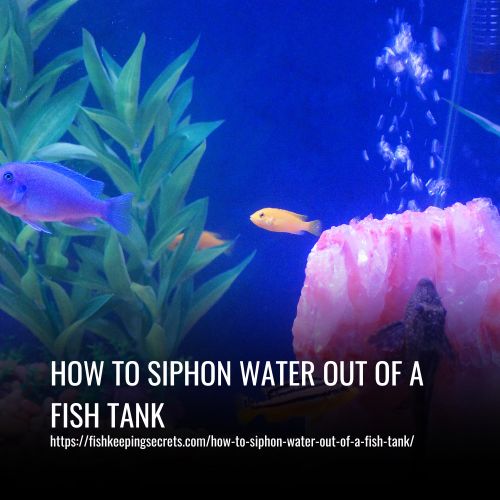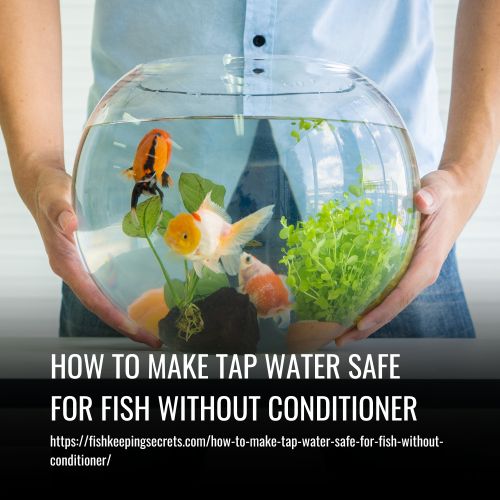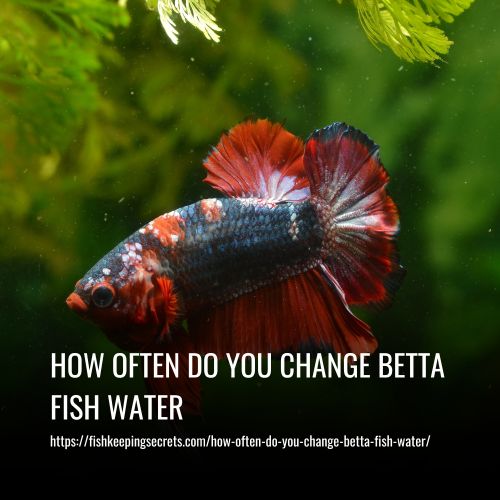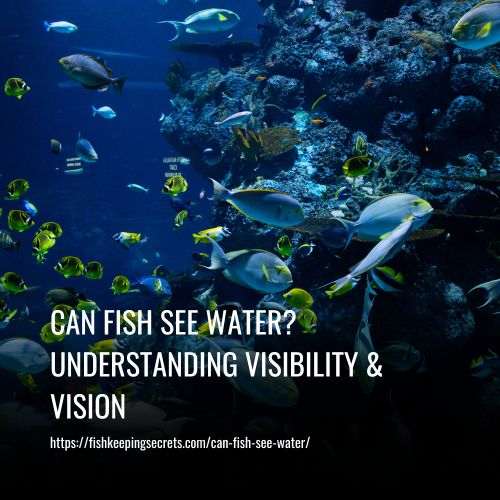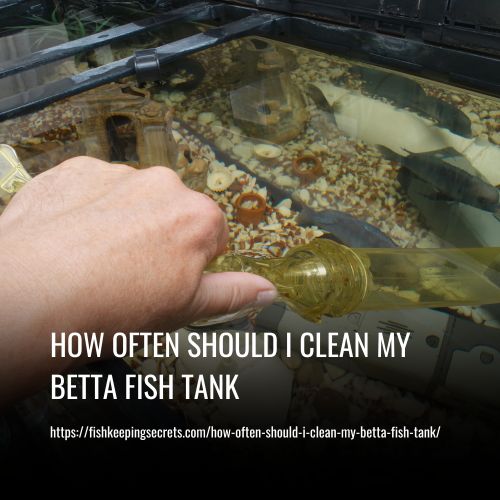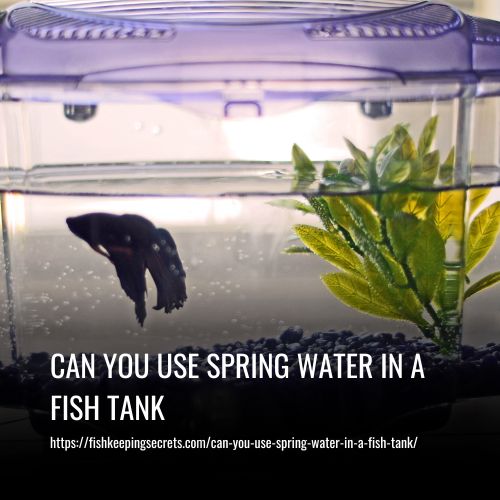Can Hard Water Kill Fish: Is It Harmful to Aquarium Life?
This post contains affiliate links. As an Amazon Associate, we earn from qualifying purchases.
Yes, hard water can be harmful to fish and potentially lead to their death. Water hardness refers to the mineral content in the water, specifically the presence of calcium and magnesium ions. Some fish species are more sensitive to certain levels of hardness and require specific conditions to thrive.
If the water hardness is outside the acceptable parameters for the fish, it can cause stress, affect their health, and potentially lead to death. It’s important for aquarium owners to monitor and regulate water hardness to ensure the well-being of their fish.
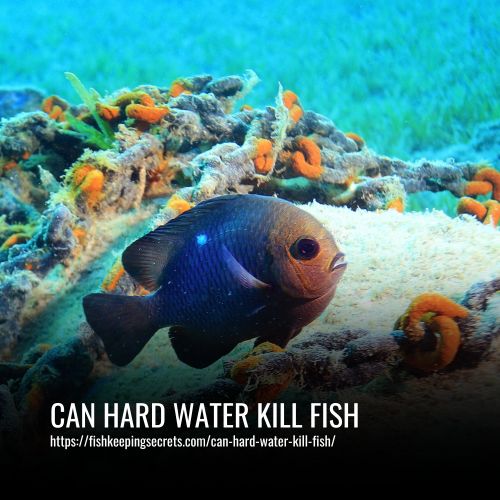
What is Water Hardness in the Aquarium
Water hardness is an important factor to consider in your aquarium as it can affect the health of your aquatic life and plants. The hardness of water is linked with the presence of specific minerals, such as calcium and magnesium ions.
It is typically created when water passes over limestone or dolomite sources, or through the use of aquarium driftwood, Catappa leaves, or other natural botanicals that release tannins. The water hardness also has a direct relationship with pH levels and can act as a buffer if you wish to adjust either up or down.
Most freshwater fauna can easily adapt to hard water but extreme ranges may lead to algae growth that outcompetes aquarium plants. Therefore, it is important to make sure water hardness levels are within suitable ranges for aquarists’ needs and preferences. Additionally, adjusting these levels can be beneficial for certain fish and invertebrates since minerals help support their metabolism, bones, and exoskeletons.
What Fish Do Well In Hard Water
Most freshwater livebearers are able to adapt to water with a higher hardness. However, once the hardness levels become too high, the stocking of your aquarium is limited to African cichlids endemic to certain lakes such as Lake Malawi and Lake Victoria, as well as some Central American cichlids.
It is also noteworthy that while most aquatic plants can tolerate a wide range of general hardness levels, some hobbyists have reported increased growth of certain types of algae in more extreme conditions, which can lead to an unhealthy aquarium environment for aquatic plants.
For these reasons, it is important to adequately research the different requirements for each type of fish or plant before introducing them into the tank.
How Do You Measure Water Hardness in the Aquarium
The hardness of water can be measured using TDS (Total Dissolved Solids), GH (General Hardness), and KH (Carbonate Hardness). TDS is a measurement of the total amount of organic and inorganic matter present in a particular volume of water. The higher the TDS is, the harder the water. GH refers to the number of dissolved minerals, primarily calcium and magnesium, that are present in the water.
Finally, KH gives an indication of the alkalinity levels of a sample of water and how it will affect pH levels. (i.e., its buffering capacity.) KH can be measured in two ways: dKH (degrees of KH) or ppm (parts per million).
Reasons to Adjust Water Hardness
Adjusting water hardness is an important aspect of fishkeeping and can make a huge difference in the health and well-being of your fish. Hardness levels can be adjusted by using reverse osmosis (RO) membranes or adding minerals to the tank to achieve ideal water parameters for different species.
1. Match Ideal Parameters for Specific Species
When choosing fish for your aquarium, it is important to consider the natural water parameters in their original environment. For most freshwater fish, hard water levels are suitable and they can easily adapt. However, wild-caught fish that come from soft water environments may not do well if placed in hard water tanks. It is also important to research the specific needs of shrimp since too much hardness can lead to issues with molting.
African cichlids, on the other hand, will actually prefer harder waters as this is their natural environment. Ultimately, you want to do your research so that you can provide your fish with the most suitable environment possible for them.
2. For Breeding Purposes
When understanding the needs of fish, it’s important to research the type of water that is best for each species. Livebearers, such as guppies, platies, and mollies, must have hard water in order for them to be able to replenish essential minerals like calcium so they can give birth to their fry successfully.
In contrast, some fish like rams (Mikrogeophagus ramirezi) need soft water in order to breed since too much calcium can lead to fertilization issues with their eggs. Therefore, it’s important to make sure that you provide your fish with the correct type of water for their particular species in order for them to survive and thrive.
3. To Grow Specific Plants
When choosing aquatic plants for your aquarium, it is important to consider the hardness of the water in your tank. While many aquatic plants can do well in either soft or hard water conditions, there are some species that should only be kept in specific water parameters.
Vallisneria, for example, does not do well if the water is too soft and can even melt away over time. It is important to research the specific requirements of each plant before introducing them to your tank. Additionally, make sure to check the pH and temperature of your aquarium regularly and adjust as necessary to maintain optimal conditions for your fish and plants.
4. For the Safety of Your Tank’s Inhabitants
It is important to consider water hardness and pH when setting up an aquarium. Hard water usually has a high pH, while soft water usually has a low pH. Aquarists in areas with very soft tap water should be especially aware of the buffering capacity of their tank, as this could lead to sudden and drastic swings in pH levels, potentially crashing the aquarium’s cycling process.
To counteract this issue, aquarists should increase carbonates to act as a buffer against sudden drops in pH or other extreme changes in water parameters. Monitoring your aquarium’s water chemistry and testing it regularly is key to having happy and healthy fish.
Methods of Fixing Hard Water in Fish Tank
There are several methods of fixing hard water in a fish tank, depending on the desired results. The two most common ways to reduce hardness levels are using reverse osmosis (RO) membranes or adding minerals.
1. Reverse Osmosis
Reverse Osmosis (RO) is an effective and efficient way to soften hard water, making it great for fish that need softer water. The RO system works by passing the water through a thin, permeable membrane with high pressure, which removes 95–99% of mineral compounds, hard metals, chemicals, and other contaminants and pollutants from the water.
Although this brings the pH and GH & KH levels in the output to 0—making it completely soft—it is not suitable for fish to live in as they need some minerals present in their environment. This can be achieved by combining untreated tap water or using a special salt mixture remineralized to balance out the minerals.
However, using an RO system comes with some drawbacks: It is slow and requires regular plans for producing soft water; the amount of treated water produced depends on the type of model installed; it’s quite expensive to install and maintain; maintaining an optimal pH and GH level also requires careful monitoring; and finally, the filter loses its efficiency over time requiring frequent replacement. Despite all these points – if you have a need for highly sensitive fish that only thrive in very soft water – reverse osmosis might be your best option.
2. Distilled Water
Distilled water is a great option for aquarists who need to lower their tank’s hardness level. Distilled water has a balanced pH with zero GH and KH, which means it will not affect the levels in your tank. However, it is important to note that distilled water also has very low dissolved oxygen levels, so you’ll need to aerate it before adding it to your aquarium.
Also, because you have to purchase large amounts of distilled water depending on the hardness level of your tank, consider using a remineralized to get the right combination of minerals and pollutants. With proper usage and maintenance, distilled water can provide an optimal environment for freshwater fish.
3. Natural Rainwater
If you’re looking for an inexpensive solution to provide clean water for your aquarium, collecting rainwater may be a viable option. When collecting rainwater, it’s important to make sure that the air quality in the area is safe and clean and that you use sterile, food-grade containers. Avoid collecting the first batch of rain as pollutants and chemicals can be leached into the water.
Additionally, when collecting rainwater, keep in mind that it may not rain for weeks at a time so it’s important to have some stored. Mix collected water with tap water or aquarium salts to raise GH and KH levels. By following these tips, you can help ensure that your fish get clean and healthy water without breaking the bank.
4. Water Softening Pillows
Water softening pillows are chemical filtration media used to decrease the calcium and magnesium levels in the water. This is accomplished by replacing them with sodium chloride, reducing the water’s hardness. Saltwater aquariums may benefit from this method, but it is important to keep in mind that the added sodium levels might affect the fish’s tolerance.
The pillows usually fit inside the filter unit of an aquarium and can be recharged in a salt solution when they become less efficient. However, this method is not suitable for large aquariums since they can only treat a small amount of water at a time.
5. Peat Moss
Peat moss is a natural and effective way to lower the GH and KH levels of your fish tank’s water. The moss binds to calcium and magnesium ions, which are removed from the water, resulting in softer water with a lower pH and carbonate level. To use peat moss, you can put it in a mesh bag inside your filter for maximum effectiveness, or for shorter-term use, place it in a container or pillowcase in the tank itself.
Boil the peat moss and aerate the water after adding it to ensure it’s safe and effective for your fish. With time and observation, you will be able to adjust your tank’s parameters to perfect conditions for your fish.
6. Driftwood
Driftwood is a popular addition to aquariums. Not only does it look natural and provide a hiding spot for your fish, but it also releases tannic acid into the water which reduces the hardness of the water. It’s important to purchase from a reliable source, such as a pet store or online.
However, if you choose to find and clean your own driftwood, be sure to boil it for a couple of minutes or pour boiling water on it first to eliminate potential infections or hitchhikers. Additionally, monitor the driftwood for any signs of algae or fungus growth once it’s in your tank. Tannins released by driftwood will turn the water brown unless you soak the wood for several weeks before adding it to your tank.
7. Macroalgae
Macroalgae are a popular choice among aquarium hobbyists due to their ability to reduce nitrate, nitrite, phosphate, and ammonia levels in the tank. Halimeda sometimes referred to as Money Plant is a type of green calcareous macroalgae which takes in calcium from the water for nourishment. It can act as algae in main tanks without needing a separate refugium.
While this macroalga is not often eaten by fish, it does go “sexual” after aging, which releases the absorbed minerals back into the water. Therefore, regular trimming of the older parts should be done to ensure the healthy and vibrant growth of this type of macroalgae.
FAQs
The hardness of water is determined by how much rock has dissolved in it, primarily limestone. Rain has an acidic nature and when it lands on or passes through limestone, it causes the softening of the rock, eventually leading to its erosion into bodies of water. Experience the fascinating allure of limestone and dolomite, with their iconic mix of calcium carbonate and magnesium!
Hard water can be detrimental to fish. PH levels can get dangerously high, preventing fish from performing vital functions necessary for their survival, potentially leading to death.
Adding soft water to your tank can help reduce hardness levels in the water. De-ionized water without minerals or rainwater can be purchased for this purpose. If the problem is severe, it may be necessary to empty the tank and replace all its contents. To start with a lesser degree, try replacing some of the contents and keep checking hardness levels until a healthy level is achieved.
It is recommended to check the source of your water for high levels of minerals, such as calcium and magnesium, as these indicate hard water which is not suitable for aquariums.
Water in fish tanks can be hard due to the presence of minerals such as calcium and magnesium, which are commonly found in tap water.
Water can become hard when it contains dissolved minerals. These minerals can come from rocks and soils, as well as the climate and environment of the area. For example, water seeping through limestone rocks will become harder due to the dissolved minerals present. In aquariums, water can become hard if there are mineral-rich ornaments or substrates present.
Conclusion
Hard water is not recommended for use in aquariums due to the high levels of dangerous minerals. Though it may not always kill fish, its lack of essential trace elements and mineral imbalances can cause them long-term health problems. Using a water treatment product designed specifically for aquariums is a much better option if your tap water is hard due to the presence of these minerals.
By replacing your tank’s water regularly, testing it with a quality test kit, and keeping up with good maintenance practices you’ll be able to ensure that your fish stay healthy and safe.

